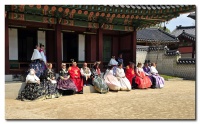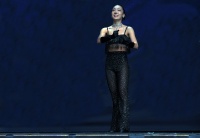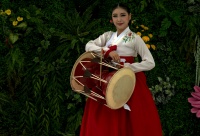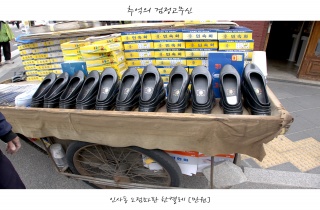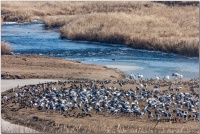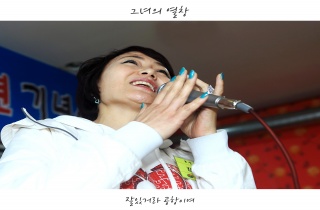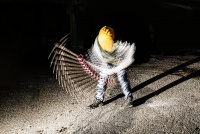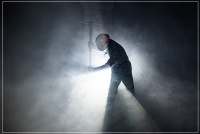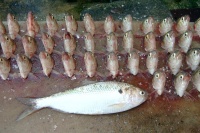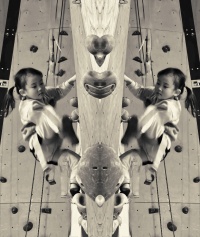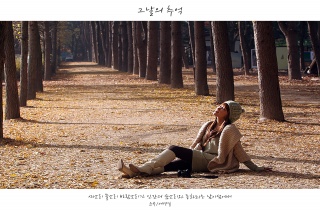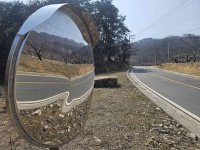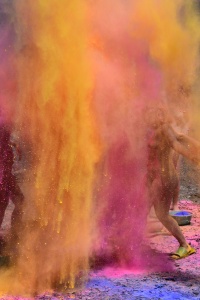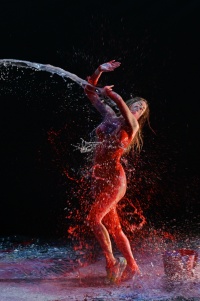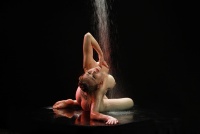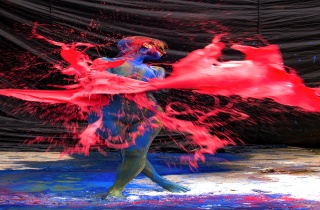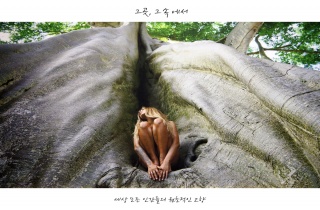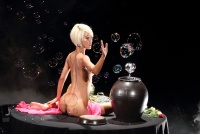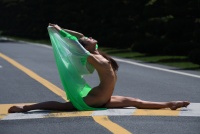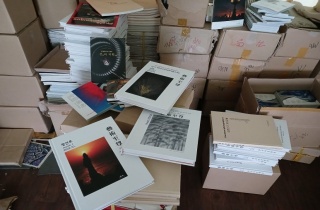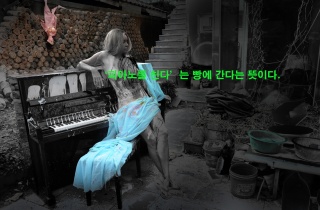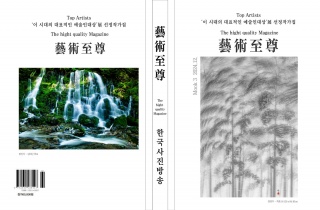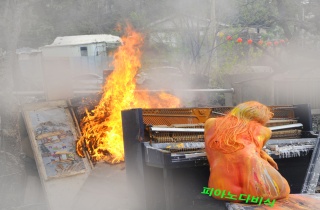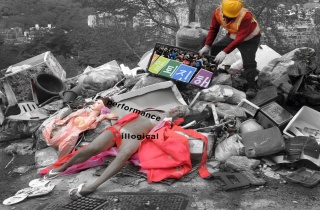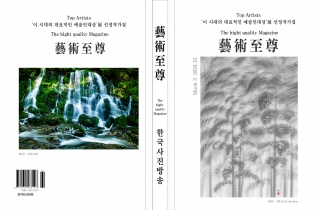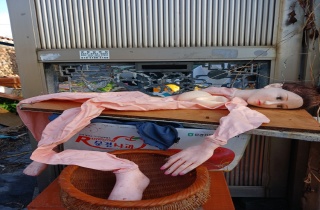| 신철균 초대展 “흑백 산야의 깊은 울림” 장은선갤러리
2024.2.7 (수) ~2.23 (금)
서울시 종로구 운니동19 / 02-730-3533
www.galleryjang.com
강원대 미술학과 교수를 작년에 정년 퇴임하신 한국화작가 신철균 선생님은 자신의 고향이자 삶의 터전인 강원도의 산림 풍경을 주제로 수묵산수화를 그려왔다. 작가는 먹과 물의 조화를 통해 산의 웅장함과 깊이있는 작품을 완성한다. 산수화의 전통적인 기법과 철학을 계승하면서도, 현대적인 감각과 시각을 더하여 신철균 작가만의 새로운 산수화의 세계를 열어가고 있다.
작가는 흑백의 수묵으로 표현하는 산수화를 통해 자연의 아름다움과 인간의 삶의 의미를 담아내고자 한다. 그는 산의 형상을 과감하게 생략하고, 먹과 물의 농도를 조절하며 빠르고 강한 필선의 산의 느낌을 연출한다. 대체적으로 모노톤의 잔잔한 화면에 수묵의 맑고 두터우며 깊이있는 표현은 풍부한 시각적 잔상을 남게한다. 작가는 일상의 주변에서, 혹은 삶의 언저리에서 포착된 자연의 인상을 특유의 감상적인 필치로 표현해내기에 그의 작품 속 자연의 모습은 익숙하고 친근함을 가져다 준다. 그는 산을 대상으로 존재하며 대립하는 것이 아닌 대화하며 교감하는 또 다른 상대로 인식하고 있는 부분을 엿볼 수 있다.
작가의 작품들은 한국화의 고즈넉함과 멋을 잘 보여준다. 그의 작품은 색채의 제한을 넘어서는 풍부한 감각적 효과를 선사한다.
구정이 시작되는 2월의 어느날, 작가만의 담담한 필치로 산수 예술의 정수를 멋지게 담아낸 신철균 선생의 작품 30여점이 장은선갤러리에서 전시된다.
신철균 교수는 강원대학교 미술교육학과 및 동 대학원 졸업하였다. 춘천미술관, 미국 일리노이 주립대학 박물관 등 국•내외에서 개인전 14회와 몽골 국립현대미술관 '몽골수교25주년기념 몽골초대전'. 일본 知足미술관 '현대한국수묵산수화전' 등 여러 초대전과 단체전에 참가해왔다. 강원도문화상과 강원미술상을 수상했고 국립현대미술관, 포항시립미술관, 미술 Southern Illinois University 박물관 등 다양한 기관에 작품이 소장되어 있고 현재 강원도 문화재위원이다.
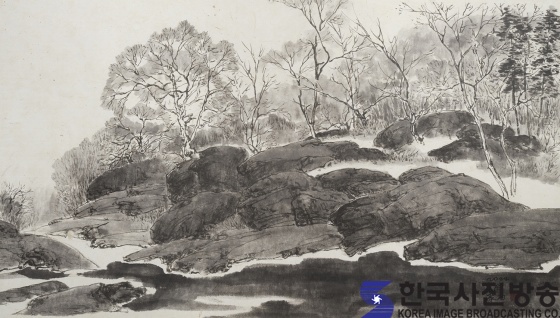
***********
‘산이 있어야 숲이 있고, 숲이 있어야 산이 그윽하다’
--신철균 개인전에 부쳐--
김상철(동덕여대 교수. 미술평론)
작가 신철균의 예술 역정은 실경 수묵산수화로 일관하고 있다. 풍부하고 깊이 있는 수묵의 유장한 맛은 그의 작업이 지니는 첫 인상이자 장점이다. 그의 작업은 크고 기이하며 특별히 아름답거나 유명한 풍광을 굳이 취하지 않는 것도 특징이다. 일상의 주변에서, 혹은 삶의 언저리에서 포착된 자연의 인상을 특유의 감성적인 필치로 표현해내기에 그의 화면은 익숙하고 친근하다. 강원도를 태생지로 하고 교육자로서, 또 작가로서의 삶 역시 이를 바탕으로 일관하였기에 이는 당연한 일일지도 모른다.
그의 산은 늘 너그럽다. 크고 웅장한 덕목을 유감없이 드러내는 대작에 있어서나, 자연의 소소한 부분에 눈길을 주는 작은 화면에서도 이는 공히 포착되는 바이다. 이는 단순히 그의 기법이나 표현에서 기인하는 것이 아니라 그의 천성이 반영된 자연을 대하는 그의 태도에서 비롯된 것이라 여겨진다.
그의 화면은 다분히 원칙적이고 합리적이다. 멀고 가까움을 구분하고 사물의 크고 작음을 나눠 수용해 내는 일련의 과정은 흐트러짐이 없다. 더불어 여백의 설정과 농담의 구분, 그리고 사물과 사물간의 관계 설정에 있어서도 파격이나 변용을 경계함이 여실하다. 화면 전반의 조화와 균형을 통한 중용(中庸)적 가치의 추구는 그의 작업 전반을 관통하는 가치라 여겨진다. 이 역시 그의 천성에서 기인하는 바일 것이라 생각한다.
그의 산수는 필 보다는 묵을, 기(氣) 보다는 운(韻)을 지향함이 여실하다. 빠르고 강한 일필의 유혹을 모나지 않은 유연한 필선으로 대체하고, 대상의 명료함 대신 그윽한 수묵의 운용을 통해 표현해 내는 그의 산수는 그래서 장중하고 무거운 깊이가 있다. 일반적으로 기(氣), 혹은 기세의 표현은 필(筆)이 지니는 장점이다. 강하고 분명하며 그 흔적을 고스란히 드러내는 장쾌한 속도감과 호방한 운동감 등은 필의 운용에서 기대되는 효과이다. 그러므로 필은 직접적이고 남성적이다. 이에 반하여 묵(墨)은 상대적으로 정적이며 소극적이다. 그러나 묵은 두터움과 깊이를 제공해 준다. 기(氣)가 직접적으로 종을 때리는 쇳소리라면, 운(韻)은 이에서 울려 퍼지는 종소리와도 같은 것이다. 당연히 기가 있어야 운이 생성되는 것이고, 운이 있어야 기는 비로소 의미를 갖게 된다. 분명 실경을 바탕으로 하지만 그는 자연에 대한 관찰과 교감을 통해 자신을 투영하고 그 결과를 조심스럽게 화면에 표출하고 있다. 그래서 그의 산은 두텁고 친근하며 깊이가 있는 것이다. 그것은 바로 그가 포착한 대자연의 운(韻)이다. 그가 적잖은 작품의 명제를 <산운>(山韻)이라 함은 이러한 연유일 것이다.
옛말에 수묵은 필법에서 시작하여 묵법을 통해 풍부해지며, 수법(水法)에 의해 비로소 완성된다고 하였다. 그래서 먹으로 그린 그림을 수묵화라 말하며 수(水)를 앞에 두는 이치일 것이다. 그의 작업을 일관하며 느낀 것은 그의 화면에서 전해지는 물의 맛이다. 물론 이는 그윽하고 깊이 있는 먹의 운용에서 기인하는 것이지만, 그 이면에 작용하는 물의 작용에 대해 주목하여야 할 것이다. 그의 수묵은 매우 습윤하며 무한한 변화를 내재한 풍부한 것이다. 그것은 먹의 검은 맛을 드러내는 것이 아니라 물의 흔적과 변화를 표출하기 위한 수단이자 방법이었을 것이다.
그의 화면은 대체로 검고 어둡다. 수묵화의 특징이다. 그러나 그의 수묵은 맑고 두터우며 깊이 있다. 반복적인 선염과 적묵을 통해 이루어지는 수묵의 두터움은 탁함을 기본으로 한다. 그럼에도 불구하고 그의 수묵이 맑게 느껴지는 것은 바로 물에 대한 그의 장악력과 이해가 반영된 결과일 것이다. 그는 탁함을 통해 맑음을 드러내고, 어두움을 통해 밝음을 표현하는 모순되고 상충되는 가치를 수묵을 통해 표출해 내고 있는 것이다.
사실 수묵은 매우 사변적이고 철학적인 표현 수단이다. 그러므로 조형을 추구하는 것이 아니라 사의(寫意), 즉 작가의 관념과 사고를 표출하는 것을 우선으로 한다. 그가 실경이라는 제약과 산수라는 굴레에 얽매이지 않고 특유의 깊이와 두터움을 통해 자연에 대한 자신의 사유를 표출해 내는 변화를 통해 오늘에 이르고 있음은 평가되어야 할 것이다. 육안에 의해 관찰되는 형상의 유혹을 초월하고, 그윽한 수묵의 세계를 통해 대자연의 본질에 육박하고자 함은 그의 작업이 어쩌면 이제 또 다른 변화의 과정에 다다른 것이라 여겨진다. 관찰에 의한 대상의 이해가 아닌 관조를 통한 대상의 내면에 접근하는 것은 본래 산수가 지닌 가장 근본적인 요구이자 덕목이다. 그가 운(韻)을 지향하고, 물의 심미에 주목하고 있다는 점은 적어도 그에게 있어서 산은 대상으로 존재하며 대립하는 것이 아니라 대화하며 교감하는 또 다른 상대로 인식되고 있음을 말해준다. 적잖은 실경 산수 작가들이 현장의 객관성에 함몰되어 산수 본연의 가치를 망실하거나 오도하고 있음을 상기 할 때 산수 자연에 대한 작가의 관조적 시각을 통한 주관적 해석이 새삼 반갑고 귀하게 다가온다.
그는 ‘산이 있어야 숲이 있고, 숲이 있어야 산이 그윽하다’라는 소회를 말하고 있다. 다분히 상식적인 말이지만, 이는 그의 작업을 관류하고 있는 가장 핵심적인 가치이자 상징적인 발언이라 여겨진다. 이는 당연히 단순한 산수 자연에 대한 설명을 넘어 그의 삶과 그가 지향하는 예술 세계 등을 포괄하는 상징적인 의미로 읽혀진다. ‘산이 있어야 숲이 있다’라는 말은 그가 그간 대상으로서의 산을 보고 숲을 관찰함이라 이해된다. 이제 그는 숲을 확인하고 스스로 설정한 ‘그윽한 산’으로의 여정을 앞두고 있는 셈이다. 그간 그가 보여준 작가로서, 또 교육자로서의 성실함과 진지함을 전제로 볼 때 그는 늘 그랬듯이 은근하고 꾸준하게 그 성과를 조심스럽지만 분명하게 우리들 앞에 펼쳐 보일 것이다. 작가의 다음 여정을 응원하며 그날을 기대해 본다.
‘a forest must be with mountain, and must be a the mountain with forest is beautiful.’
-- to the Shin CheolKyun's solo exhibition--
Artist Shin Cheol Kyun's art is consistent with real-world indian inked landscape paintings. The rich and deep taste of ink is the first impression and strength of his work. The characteristics of his work are neither large nor strange, and his works does not necessarily use particularly beautiful or famous scenery. His works are familiar because those express impressions of nature captured around daily life or in life with unique and emotional strokes. As an educator and artist born in Gangwon-do, his life is also consistent, so this is natural.
His mountains are always generous. This is captured both in large works and in small works. It is believed that this is not simply due to his techniques or expressions, but rather his attitude toward nature which reflects his personality.
His works are quite principled and rational. There is no disruption in the series of processes of distinguishing between distance and nearness, and dividing and accepting the big and small of objects.
In addition, it is clear that he is wary of unconventionality or transformation in the setting of blank space, the distinction between light and shade, the establishment of relationships between objects. The pursuit of moderate values through harmony and balance throughout the works are the value of his work. I think this also stems from his nature.
It is clear that his landscapes focus on ink rather than brush, and rhyme rather than energy. That is why his landscapes have a solemn and heavy depth.
This comes from replacing fast, strong single strokes with flexible strokes and expressing them through the use of ink instead of the clarity of the subject.
In general, the expression of energy is an advantage of the brush. The effect expected from the use of the brush is a strong and clear sense of speed and bold movement that clearly reveals its traces.
Therefore, the brush is direct and masculine. In contrast, ink is relatively static and passive. However, the ink provides thickness and depth. If energy is the sound of metal hitting a bell directly, then rhyme is like the echo sound of a bell resonating from the hitting. Of course, only with energy can rhyme be created, and only with rhyme can energy have meaning. Based on his clear real world views, he projects himself through observation and communication with nature and carefully creates the results into his works. That's why his mountains are thick, friendly, and deep. That is the rhyme of Mother Nature that he captured. This may be the reason why the title of many of his works is <Mountain rhyme>(山韻).
In the olden days, it was said that ink wash began with the brush method, became richer through the ink method, and were finally completed through the water method. So, a picture drawn with ink is called an ink wash painting, and it would be the logic to put water first. What I consistently felt through his work was the taste of water conveyed through his works. Of course, this is due to the profound and deep use of ink, but we must pay attention to the action of water behind it. His ink is very wet and rich with infinite changes. It may have been a means to express the traces and changes of water, not to reveal the black taste of ink.
His works are generally black and dark. This is a characteristic of ink wash painting. However, his ink is clear, thick, and deep. The thickness of ink, achieved through repeated dyeing ink, is based on turbidity. Nevertheless, the fact that his ink wash paint feels clear is probably the result of reflecting his control and understanding of water. Through ink, he expresses the contradictory and conflicting values of revealing clarity through turbidity and brightness through darkness.
In fact, ink wash is a very speculative and philosophical means of expression. Therefore, rather than pursuing formativeness, priority is given to expressing the artist's ideas and thoughts. It should be appreciated that he expresses his thoughts about nature through unique depth and thickness without being bound by the shackles of real landscape painting.
His work transcends the shapes observed with the naked eye and expresses the essence of Mother Nature through the world of ink wash.His work transcends the shapes observed with the naked eye and expresses the essence of Mother Nature through the world of ink and ink. Perhaps he has now reached another process of change. Accessing the inner self of an object through contemplation rather than understanding through observation is the most fundamental virtue of landscape painting.
For him, the mountain is not an object or a confrontation, but is perceived as another partner with whom he communicates. This is because he aims for rhyme and focuses on the aesthetics of water. When we recall that many real landscape artists have lost sight of the original value of landscapes, the subjective interpretation of nature through his contemplative perspective is once again welcome and valuable.
He says, ‘a forest must be with mountain, and must be a the mountain with forest is beautiful.’ Although this is quite common sense, it is considered the most core value and symbolic statement that runs through his work. Naturally, this is read as a symbolic meaning that goes beyond a simple explanation of landscape nature and encompasses his life and the world of art he pursues.
The saying, ‘There must be a mountain to have a forest’ is understandable because he saw the mountain as an object and observed the forest for a long time. Judging by his sincerity and seriousness as a painter and as an educator, he will quietly but steadily unfold his achievements before us, as he always has, carefully but clearly.
We look forward to that day as we support the artist on his next journey.
Kim, Sang-chul/Art Critic
|


